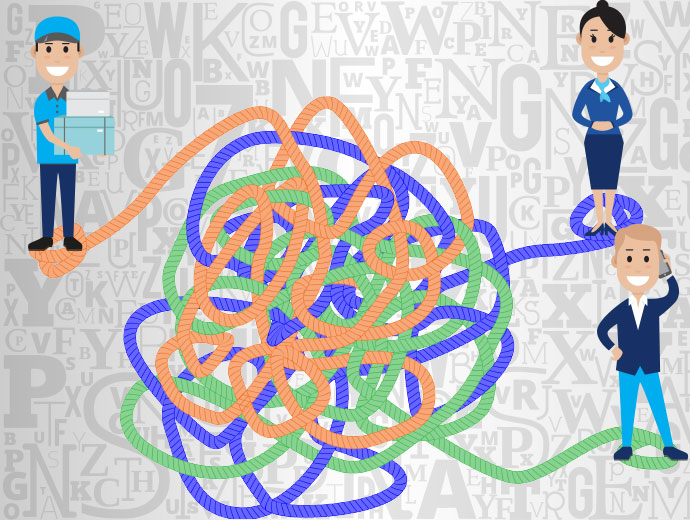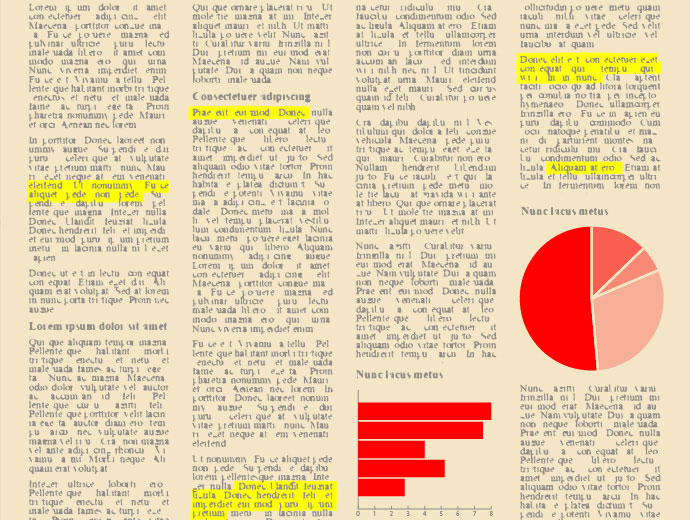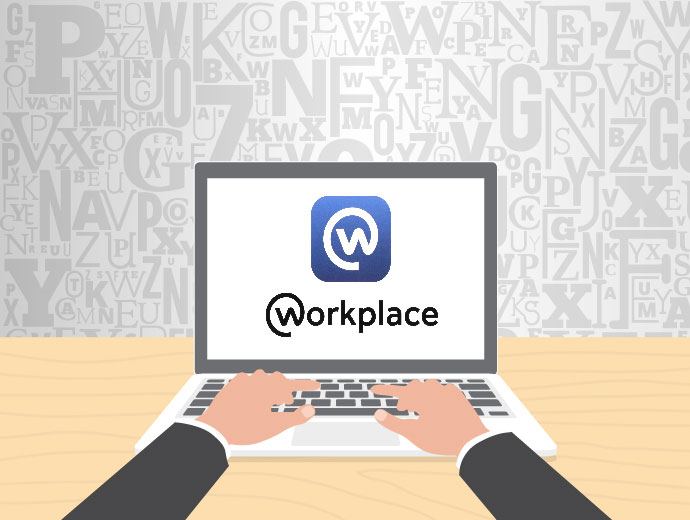
Employee like a customer? Sure! Well, it’s your internal customer, but the mechanisms used for internal communication are very similar to those used in external communication. Both need a lot of attention and time, good planning and a wise pursuing for the goal, which in the case of internal communication is the right flow of information within the company, among others.
Do you know who you want to reach with a specific piece of information – apart from knowing they are your employees? Are you sure you want to convey the information to all of them? When you organize a meeting for managers, what’s the point hassling production workers? Are you sure internal coaching in Wrocław is of any interest to colleagues working in Lublin? Not necessarily, right? That’s why you need segmentation, dividing the recipients into specific target groups, to which you are going to match the right messages. Naturally, there are messages which should be seen by everybody – after all, everyone needs to know about a planned change of the office or a team building event.
In order to make internal communication go smoothly, you need to get to know your employees and understand them – if you think you already do, you are mistaken. You need to know their needs and expectations at work and beyond (benefits).

Do you know what’s important to your employees? Click here
It’s important to write corporate message in a comprehensible language, so that they don’t leave people in doubt about what they should do – respect your associates’ time and nervous systems! There’s nothing worse for an employee than uncertainty about what to do, especially when it’s impossible to find out. A clear message, on the other hand, makes people comfortable and provides them with a sense of security, which of course means better quality of work.
What you need to remember:
– use simple language– the more difficult the subject, the more care you should take to create a clear message;
– make it visually attractive – divide longer texts into paragraphs, list your ideas in points, illustrate the message with photos, infographics, etc;
– use high quality content;
– be creative and explain by using case studies;
– be prepared to answer any questions regarding the message – prepare a Q&A section in advance and get support from an expert on the subject.
When working on internal communication, we need to know why we are writing about a given subject. Not every material must go to your employees. Our role is to select – to check if there hasn’t been a similar message recently, whether information about a project implementation is not going public too early, whether the employees really needa given piece of information.
Obviously, we’re not deciding if a publication is necessary solely from our own point of view. We often need to convey information that is hardly attractive, but in the eyes of its author it is extremely important, e.g. for the functioning of a department or cooperation with a customer. It is our mission then to maximize the attractiveness and liveliness of the message, to make it easier to understand. And here comes the role of the right journalistic formatto engage employees – one that will not only make them read the message, but also get interested in the subject, ask questions, or even will convince them to take part in a meeting or coaching. The format depends on the capability of the media – be it an email, a newsletter, or a corporate magazine.
The secret of an engaging format lies in the already mentioned simple language (if there’s something you don’t understand, ask an expert to explain it) and attractive design. This is the way to explain, without boring anyone, what it’s all about, why the information is so important and that there’s no other way but to read it. Use charts, gifs, highlighting, catchy headings, a logical text division, tables, arrows, anything that helps comprehend the story effortlessly. No one is going to read a convoluted text – despite best efforts nobody will find neither the time nor the conditions between a tenth phone call and a fifteenth email.

Read about importance of internal communication in difficult moments.
Select the channels which you are going to use to convey information to employees.
The answer “all” is not necessarily the right one, as communication tools should fit the target group. Want to put info about the Christmas party in the newsletter? You can, but what about the associates who don’t have a company email? You have a message about changes in contracts your sales representatives sign with customers? Are you sure the intranet, which can be accessed by anyone, is the right place for it?
We need to mention that adequate internal communication helps to create a friendly working environment, of which employees themselves become the ambassadors. Information about the company posted by employees on the Internet is considered the most reliable by other users (including future employees). Following this line, it is worth engaging people in creating internal communication, using social networking websites such as Workplace, and making them aware that whatever they publish online about their job is important both for them and for the company.

Want to find out how to make employees your company’s best ambassadors? Read the book “Your First Customer”
You can get valuable support in developing internal communication from:
– associates, helping to elaborate on complex topics;
– tools and technologies, streamlining communication and enabling you to measure its effectiveness;
– external experts, who will make your message more reliable (e.g. attorneys, medical doctors);
– authors/editors, who will make even the most difficult content seem easier, and the unattractive one – more interesting;
– photographer, who will take photos e.g. at important company events (this is particularly meaningful in magazines).

Not sure how to get down to developing an internal communication strategy, need an expert, author or photographer? There’s a solution! Contact us and we’ll help you at any stage.
Kategorie: school of contentic, B2E